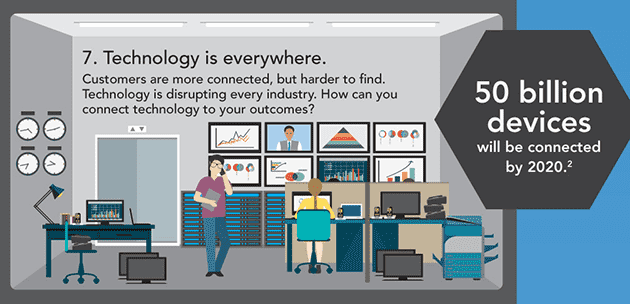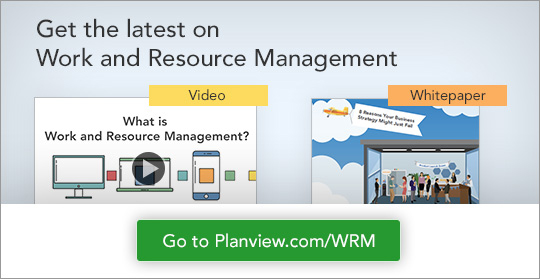
Technology really is everywhere. I was driving a golf cart the other day that kept shutting down every time I veered off the path even a little bit. Was it a mechanical issue? No, it’s a cart that’s purpose-built to keep people on the path.
Consider the technology required to produce a smart golf cart that knows when you are off course. It must be everything from satellite technology to sensors in the tires to software built into the vehicle.
That golf cart is the reality of what’s possible today. It also symbolizes the complexity of incorporating technology into all parts of your business. Get one small thing wrong, fail to take one aspect of technology into consideration across your business, stray even a fraction off course – and you could be stalled. This is why technology is number seven on our list of forces working against you:
- Outcomes are different
- Capabilities must be strategic
- Work methodologies are proliferating
- Unstructured work is exploding
- Plans are even more critical
- Teams are virtual and global
- TECHNOLOGY IS EVERYWHERE
- Resources are multiplying
Here’s a quick clip of me discussing technology during our customer conference last year:
Technology Is Everywhere
Every company is trying to determine how to incorporate technology throughout their business to grow revenues and improve the customer experience. No matter what strategic capabilities you are trying to deliver or the outcomes required to get there, technology is most likely a key component. This includes technology not just in your products and services, but also in sales, customer interactions, retail locations, marketing, and much more.
Whether it’s a multi-million dollar, multi-year digital transformation initiative or your line of business people bringing in their own apps, you must manage the technology in your business in support of your strategic objectives.
Harnessing all this technology is a great challenge for both the business and IT sides of the house. The rush of the business to embrace existing technologies and create new ones means many IT departments are scrambling to keep up or risk getting bypassed.
However, according to a recent article titled “Five Myths About Digital Transformation” in the MIT Sloan Management Review: “Most short-term transformational impact comes from ‘conventional’ operational and strategic technology — not from emerging or so-called ‘disruptive’ technology.”
This means that IT departments are indispensable to making many digital transformation initiatives work. They may no longer be the sole owner of technology innovation, but they can and should take a leadership role in partnering with the business. This is especially true if the organization has legacy IT systems. The IT organization is the only group that understands these systems and what is required to adapt them to new products, services, and other technology projects.
For example, hotels are trying to move to digital check-in processes, where guests use their mobile phones for everything from check in to check out without needing to interact with a desk clerk. All of this has to work flawlessly from the day it goes live – from the back end systems to the customer app – or it’s a major failure.
As Carina Hatfield wrote in a blog post about digital transformation last year: “Digital transformation initiatives don’t just impact the technology and the integrations but also the people and processes across the organization who handle the company’s day-to-day operations. The change management for such an initiative is huge and can’t be taken for granted.”
With all the moving parts involved and the forces working against you, how can you connect digital strategy to execution? This is another area where work and resource management (WRM) is integral. We define WRM as a comprehensive category of technology capabilities that address a broader set of work and resource challenges.
Our WRM solutions include PPM, but go much further to address the business and organizational factors in today’s environment, including technology and the other seven forces that may be working against your business strategy. WRM serves rapid unstructured work as well as strategic planning and aligning resources to deliver upon the strategy.
Next time I’ll address the last force: Resources are multiplying. For more information, visit https://www.planview.com/work-resource-management/.
I’d like to hear from you. How does your organization typically plan and execute on products, services, and applications? Share by leaving a comment below.







